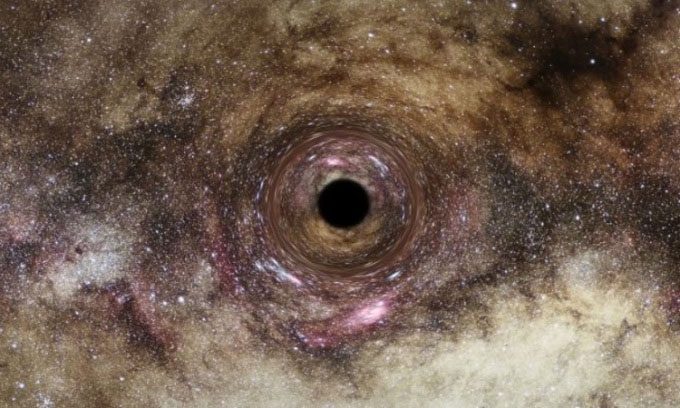Research Team from Durham University Uses Gravitational Lensing to Discover Supermassive Black Hole Billions of Light-Years Away.
Astronomers have discovered one of the largest black holes ever found, approximately 30 billion times the mass of the Sun, using Albert Einstein’s prediction of gravitational lensing. This massive black hole is located 2.7 billion light-years away in the brightest galaxy of the Abell 1201 cluster, revealed by the curved light from a background galaxy being stretched and distorted by its immense gravitational pull.

Simulation of black hole distorting space-time. (Image: ESA/Hubble).
The Monster Black Hole exists “at the upper limit of the size that astronomers estimate.” This could be the first of many similar objects in the universe that the research team may detect in the night sky using this new technique. The search for supermassive black holes is just the beginning of calculating how large black holes can grow, according to a paper published on March 28 in the Monthly Notices of the Royal Astronomical Society.
Einstein’s general theory of relativity describes how massive objects warp the fabric of space-time. Einstein proposed that gravity is not a force but rather a result of the curvature of space-time caused by the uneven distribution of mass. This curvature determines how energy and matter move. According to one of the most famous predictions of general relativity, light from distant galaxies is bent by the gravity of a massive object in front, known as Einstein’s ring. Astronomers can use this gravitational lensing effect to detect faint celestial objects that cannot be observed by other means.
“Most of the largest black holes we know are in an active state, where matter falling close to the black hole heats up and releases energy in the form of light, X-rays, and other radiation,” said study co-author James Nightingale, an astrophysicist at Durham University in the UK. “However, gravitational lensing allows us to study inactive black holes (types of black holes that are not consuming matter and therefore not producing light).”
After observing the curved light around the inactive black hole, the research team utilized information about how it stretches light to determine the size of the black hole. By combining high-resolution images from the Hubble Space Telescope and the DiRAC COSMA8 supercomputer, the researchers simulated how massive the black hole needed to be to bend light to that extent. They found that the black hole is 30 billion times the mass of the Sun and about 8,000 times larger than the supermassive black hole at the center of the Milky Way. The largest black hole ever discovered is TON 618, weighing in at 66 billion times the mass of the Sun.
Studying giant black holes in this manner could help scientists understand how black holes grow to such incredible sizes and their impact on the evolution of the universe, according to Nightingale.


















































